In order to meet the objective of the new employee onboarding process, it is highly essential for organizations not to miss out on any theoretical and practical understanding and implementation of onboarding.
Firstly, they need to have full and complete knowledge of the employee onboarding process. Secondly, they should know their company and industry in and out to be able to come up with the relevant onboarding process which is specific to their company.
In our previous articles, we deeply looked into the meaning of employee onboarding and its implementation. Now in this article, we will discuss what the forces of onboarding are and how can we incorporate them into our onboarding process to get fruitful results with the help of 4Cs of onboarding.
What are the 4Cs of Onboarding
Dr. Talya Bauer, a workplace relationship expert, wrote a report for the Society of Human Resource Management in 2010. In her report, she identifies and describes the different model for onboarding which is recognized today as the 4Cs up onboarding.
These 4Cs are very close to the onboarding process and its philosophy. This framework allows companies to evaluate their onboarding process which helps recognize problems and resolve them beforehand.
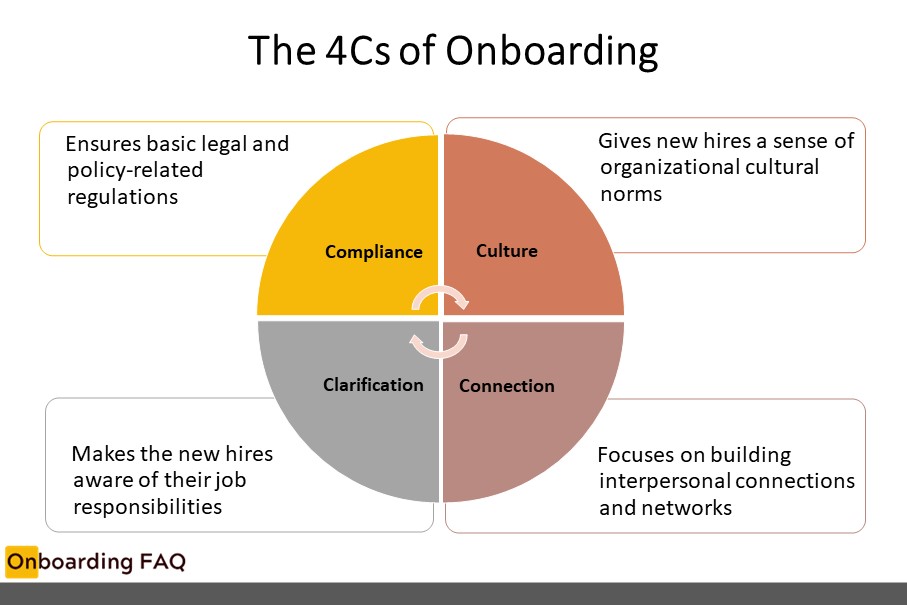
List of 4Cs of Onboarding
The 4Cs of onboarding must be systematically incorporated into the onboarding process. It will benefit the employee and experience is an impactful connection with the employer. Following are the 4Cs of the onboarding process:
Compliance
The very first step which is also known as the baseline for the onboarding process is called compliance. It refers to all the relevant compulsory actions that are required for all employees. Additionally, it includes policies procedures, rules, and requirements involved in paperwork.
Even, if organizations do not follow a formal onboarding program every onboarding process must be compliant with the companies’ laws rules, and regulations. The aside HR personnel should carefully ensure that the new hire is fully compliant before moving on to the next step.
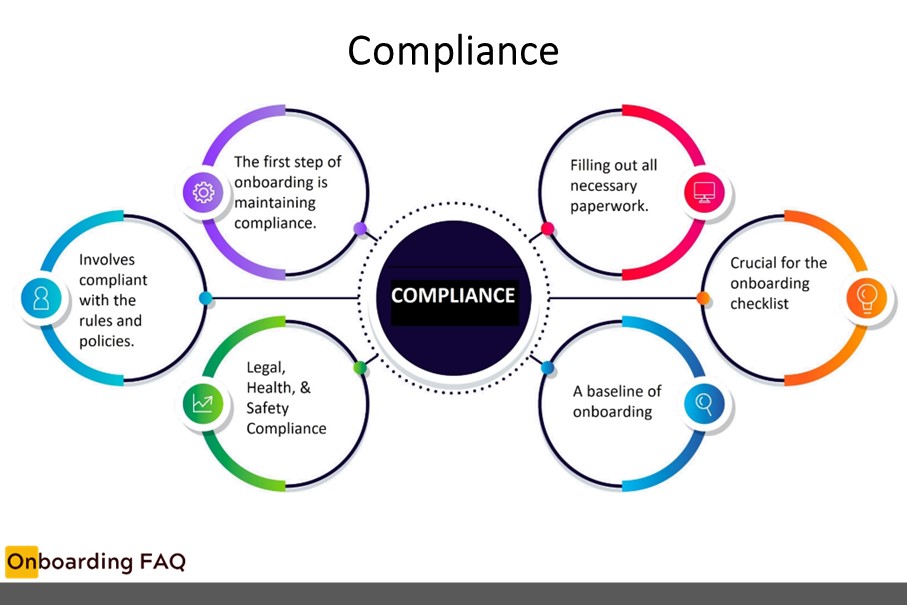
Culture
The culture of the organization should never be taken for granted. According to a survey, 46% of job seekers consider culture as the most important factor. Culture refers to the organization’s norms, beliefs, attitudes, and values.
Often, organizations overlook the emphasis on communicating the culture to new employees in their onboarding process. Culture is something unique which stands out from others.
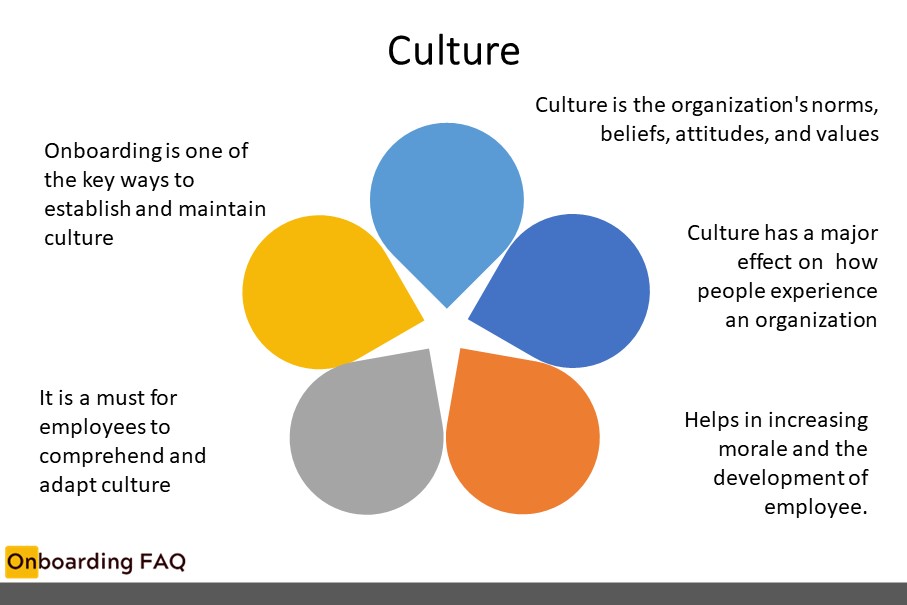
Clarification
This C makes sure that employees have a crystal-clear understanding of the job roles and responsibilities. New employees should know what is expected of them and what they are responsible for.
The sooner the new employee has clarity of job the quicker the employee can be highly productive in his job role. This step helps in avoiding role ambiguity and role conflict.
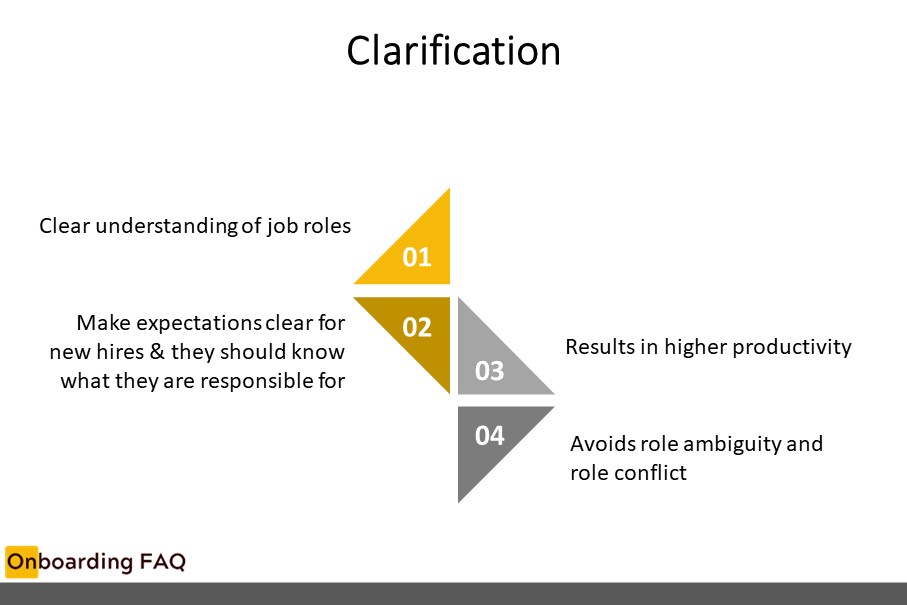
Connection
Connection is the highest degree of onboarding. It focuses on establishing and maintaining healthy relationships in the organization. Strong connections among employees lead to business success.
Fostering connections will also make the new hire feel like they are a part of the team. Assigning a mentor or buddy can help the new hire introduce team members and colleagues for a lasting connection.
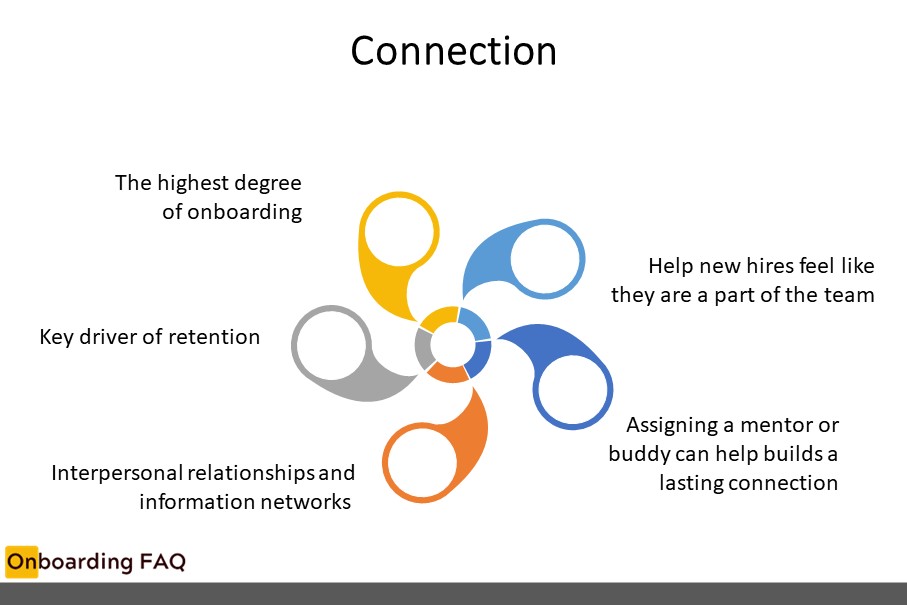
Final thought
The new employee onboarding process is incomplete incorporating all Cs of onboarding simultaneously . It further helps in increasing the effectiveness of onboarding. Therefore, ensuring to include the 4Cs leads to creating loyalty, completing the experience, and improving loyalty.
It is highly essential that all Cs are deeply rooted in the process so that the objective of onboarding is achieved. All this leads to setting the company apart from others.


